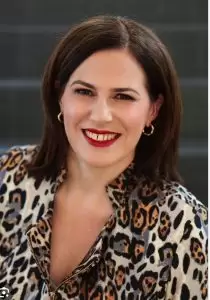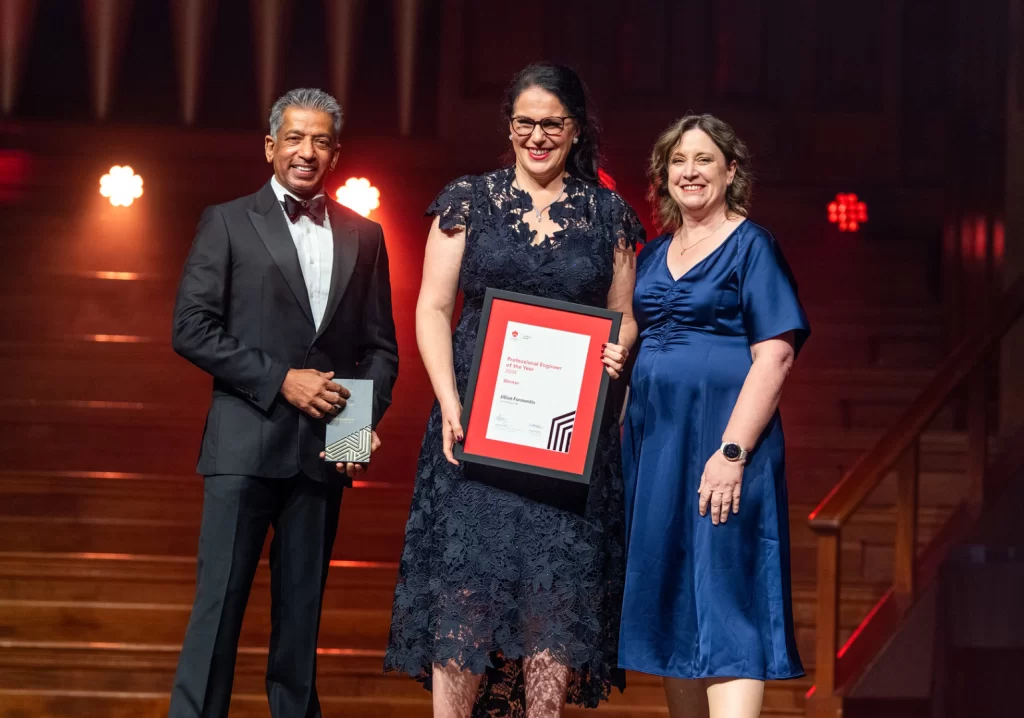The 2024 Engineers Australia Professional Engineer of the Year has centred her career around empowering teams, and revolutionising safety through accountability and diversity.
For Western Australian-based engineer Jillian Formentin FIEAust CPEng EngExec, crowned Professional Engineer of the Year at the 2024 Engineers Australia Excellence Awards, the most important factors in choosing a career were being able to make a difference and having choices.
“I grew up pretty modestly,” she told create. “And early on I wanted to be able to have a say in the world and choices about the way I live my life.”

Skilled in maths and science, engineering became a logical path for Formentin – despite being told it wasn’t a suitable career for a woman.
But her career has gone from strength to strength, with Formentin holding several high-profile roles, most recently as Head of Engineering for APAC West with Wood.
Key to her leadership development was a curiosity established early in her career about how accountability was handled when things went wrong.
This led Formentin to invest in development training, including leadership, team management, and self-expression courses, to refine her ability to communicate responsibly.
Throughout her career, Formentin has focused on projects that empower individuals to take ownership of outcomes. “If a project goes on to be built and safety issues arise later, I believe that empowering the people closest to the issue to make critical decisions leads to better outcomes,” she said.
Establishing a winning team
Throughout her career, Formentin has directed large, multidisciplinary teams – leading significant change initiatives.
From her perspective, engineering is the “ultimate team sport”.
“As engineers, we have our own strengths and skills, but we also have our shortcomings,” she said.
This is why diversity is so important.
“We need to ensure we’ve got the right mix of people on teams. Some people excel at identifying risks and issues, while others are brilliant at putting everything together or advocating for the project’s vision.”
Ensuring team members are placed where they thrive can help contribute most effectively to a project. “I very much celebrate the differences in people.”
Building strong relationships
As an engineering leader, Formentin believes relationships are the foundation for whatever outcome you wish to establish.
“I don’t know how many projects I’ve been on where people have a nickname for it because they dislike it so much,” she said. “But if they go to another company and work on the same project, they love it because the relationships are different.”
This mindset extends to relationships with systems, tools and project plans. “If we don’t get involved with the plan and understand how it serves us or what needs to change, we’ll get terrible results.”
It was these values Formentin brought with her when she led Clough through a restructure as Engineering Director APAC.
During a period of high fluidity in the recruitment market, when there was a lot of pull for engineers to jump ship, she created an environment where employees felt valued.
“You have to communicate as clearly and fully as possible about what’s actually going on because it’s their company as well,” she said.
Having an open door policy and making sure she was available as possible helped Formentin identify employees’ needs.
“If someone reached out, even on days when I was very stressed, the first words out of my mouth were “Thank you for reaching out, I’m happy to hear from you, are you okay?”
Saying something positive at the start of the conversation is a skill Formentin had to train herself to develop.
“It calms any threat people might feel and opens up communication channels.”
Enhancing safety outcomes
Formentin’s focus on transparency, communication and relationships has helped her improve safety and sustainability to the benefit of the community. This includes playing a key role in amending Western Australia’s gas-fitting regulations.
When she joined Western Australia’s Office of Energy, Formentin realised that most gas fitters had a pretty poor relationship to the state’s gas-fitting regulations.
“They probably knew enough to get their license, but their interaction with the regulations often came when something went wrong,” she said.
To improve the status quo, Formentin conducted public presentations across WA, helping gas fitters build a stronger relationship with the regulations while addressing their concerns. This work came in the wake of the Victorian Esso Longford gas plant explosion in 1998, which underscored gaps in safety oversight.
“Another part of it was the licensing of major works,” she said. “I got very curious about how our regulations might not support intervening if something like that happened in WA.”
From there, Formetin worked on developing a gas-fitting authorisation system that aligned responsibilities between individuals and the organisation that owns the major equipment, allowing for better visibility, accountability and responsibility of all the different risks.
“It was actually quite simple in the long run, because it was based on people, communications and not overcomplicating things. And there were a couple other states that actually took it on after we made that change, too.”
Addressing future challenges
As for the future of engineering, Formentin is excited about the opportunity to improve workshare between Australian engineers and international teams.
As the country moves into a maintenance-focused phase for oil, gas, and mining assets, she emphasises the need for collaboration across borders.
“Oil, gas and mining clients have invested a significant amount of money, so what will serve them best is being able to get the best return,” she said. “To do that, we need to be able to access the right people to do the right work to maintain those assets – developing, extending and ending the life of assets as appropriate.”
The challenge lies in ensuring there are enough of the right people to do that work.
“We need big groups of engineers that are able to put their minds to the work that needs to be done, such as the detailed design and risk management.”
This is something Australian engineers will need to do in partnership with people they will likely never meet.
“They might be working in Manila or Chennai where there are a lot more people doing that kind of work,” she said. “I’m excited about the challenge of bringing those people together in virtual ways to work out the right amount of time needed to learn from each other face to face in a way that enables great engineering.”
Different cultures need different mindsets, so the Australian engineer needs to be an interface – signalling a need for greater diversity.
“I think there’s going to be a lot more women who express themselves in an environment where their skills are being able to relate, develop and create big teams,” Formentin said.
“I’m hoping that’s going to welcome more women into the business, because we are often celebrated for being connectors.”
